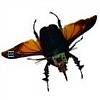latest articles
Saturday, 29 December 2012
neodymium magnets
Neodymium magnets:
One of the great inventions of the 20th century was the creation of neodymium magnets.Neodymium magnets are permanent dense magnets that produce powerful magnetic fields and are highly resistant to being demagnetized.This makes them ideal for use in electronics or any electromagnetic application requiring a reduction in size but an increase in power (power to weight ratio).
These magnets are used in a wide range of products - from computer hard drives, headphones, audio speakers, cordless tools, magnetic resonance imaging equipment (MRI), electric motors, hybrid and electric vehicles, airplanes and trains, to self-powered flashlights, fasteners and toys.
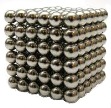
Neodymium magnets were invented in the early 1980's by two groups of physicists working independently from one another.
One group was led by John J. Croat of the General Motors Physics Laboratory, and the other was led by Massato Sagawa of Sumitomo Special Metals in Japan.
Both groups invented different manufacturing processes to produce neodymium magnets, which are made from rare earth elements.
Rare earth elements have chemical properties that make them very easy to magnetize with a high magnetic field strength.
Despite the name "rare earth", these elements (metals) are not scarce but widely dispersed in the earth. The reason they're called "rare" is because it is rare to find them in any concentration that is cost effective for mining and extraction.
Dangers
Neodymium magnets emit powerful magnetic fields relative to their size and can cause damage to credit cards, hard disks, or electronic devices.
The magnets should not be placed in direct contact or near anything that uses magnetism.They're also potentially fatal if swallowed, so for these reasons neodymium magnets are not recommended for children's use.
Viruses that grow into batteries.
Microbes:
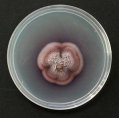
The dependence on hydrocarbon fuels supports a large infrastructure and distribution network. So scientists are looking for new sources of petroleum using bugs - tiny microbes that are genetically engineered to excrete bio-fuels.
Sugar cane, is fed to E.coli to produce bio-diesel fuel. The microbes metabolize the material and excrete fatty acids that are the same as petroleum.
In fact, the properties are no different from those of gasoline, diesel or jet fuel and genetic control can create the appropriate petroleum product.
The problem with alternative fuels like ethanol, according to University of Minnesota economist Jason Hill, is it can't be transported through current pipelines and even if all the corn grown in the United States was used for producing ethanol - it would only represent 12 percent of consumption.
Alternatively, a sugar cane crop could be converted to hydrocarbon fuel using microbes. The new crop would then absorb the resulting carbon emissions created by the fuel. This would create a hypothetical carbon-neutral gasoline.
Bio-fuel companies are securing sugar cane production from plantations in the United States and abroad in anticipation of creating these new petroleum products.

But scientists may have found a better solution for producing bio-fuel in the rain forests of South America.
A fungus known as "gliocladium roseum" produces bio-fuel from cellulose waste like sawdust and wood chips.
According to researcher Gary Strobel of Montana University, the fungus is more efficient and is a better source of bio-fuel than anything currently available, particularly since it could be used to consume 400 million tons of plant waste produced every year from farmland. More Cool Science Experiments.
nano-robot bugs
Nano-robot bugs
This article features future inventions - nano-robot bugs, future nanotechnology, e-paper, tissue regeneration, electric clothes, and undersea hotel.
Advances in microelectronics is making yesterday's science fiction into tomorrow's future inventions.
Scientists at the University of California have implanted beetles with miniaturized electronics that allows the insects to be controlled. Research presented at a conference in Italy demonstrated a new technology for creating "cyborg insects".
.The flying beetles receive wireless signals from a mobile transmitter that controls the insect. Varying impulses trigger an appropriate response from the beetle so that it flys according to it's handler.
The insect can be made to take-off, land, hover, or follow a given flight path.
Previous research concentrated on moths but giant flower beetles were easier to operate and could carry larger payloads because of their size.
 Further advances with nanobots and miniaturization will allow heat sensors and cameras to be embedded into the bugs. The insect could then be used for surveillance or search and rescue missions
Further advances with nanobots and miniaturization will allow heat sensors and cameras to be embedded into the bugs. The insect could then be used for surveillance or search and rescue missions
This article features future inventions - nano-robot bugs, future nanotechnology, e-paper, tissue regeneration, electric clothes, and undersea hotel.
Advances in microelectronics is making yesterday's science fiction into tomorrow's future inventions.
Scientists at the University of California have implanted beetles with miniaturized electronics that allows the insects to be controlled. Research presented at a conference in Italy demonstrated a new technology for creating "cyborg insects".
The flying beetles receive wireless signals from a mobile transmitter that controls the insect. Varying
impulses trigger an appropriate response from the beetle so that it flys according to it's handler.
The insect can be made to take-off, land, hover, or follow a given flight path.
Previous research concentrated on moths but giant flower beetles were easier to operate and could carry larger payloads because of their size.
Further advances with nanobots and miniaturization will allow heat sensors and cameras to be embedded into the bugs. The insect could then be used for surveillance or search and rescue missions.
nanomachines - tiny nanorobots
New Technology Inventions:
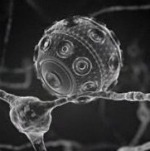
The new technology inventions of nanobots could radically change our lives.
Everything from computers, energy, medicine and the environment is being revolutionized by the development of nanomachines - tiny nanorobots capable of manipulating matter at the atomic level.
The prefix "nano" means a nanometer - a measurement one-billionth of a meter or about ten thousand times thinner than a human hair.
It is the distance that is approximately the length of a few atoms to twenty atoms placed next to each other depending on the type of atoms.
At this level, the nanoscale level of matter, nature engineers molecules by assembling and building things (such as proteins) in a machine-like manner.
These nanomachines have mechanical properties similar but not identical to how man builds machines, with motors, bushings, gears and so forth.
Nanomachines

The idea that man could precisely custom engineer nanomachines or create nanorobots to fabricate materials at the atomic level, was first postulated in 1959 by the Nobel Prize winning physicist Richard Feynman.
Today, nanorobots working in miniature molecular factories are building complex products.
Products such as wrinkle-free, stain-resistant clothing, high performance sports rackets, paper-thin super-energy generating solar panels, and smaller, faster, lighter, and more efficient electronic circuits.
Nanobots
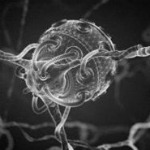 But perhaps the most significant changes that will result from these new technology inventions will be in health care - and it is already happening.
But perhaps the most significant changes that will result from these new technology inventions will be in health care - and it is already happening.
Imagine, tiny atomic nanorobots injected into your bloodstream with the sole purpose of hunting down and destroying harmful bacteria or viruses.
In nano-laboratories, nanobots carrying anti-cancer drugs have been used to recognize and target cancer cells, and then inject them with their payloads.
Scientists have also used nanobots for restoration and regeneration by introducing new genetic material into damaged or diseased cells.
Currently, the blueprints exist for building nanobots that will be capable of evaluating your state of health, including identifying potential disease risks, by simply analyzing a drop of your blood.
The potential for nanotechnology is surreal. It offers much promise and limitless benefits but it is also a territory where our history of manipulation has not always proven wise.
Gyro Technology
Gyro Technology:
This wild new motorcycle, invented by 19-year-old Ben J. Poss Gulak, is among the latest inventions to capture attention.
Debuting at the National Motorcycle Show in Toronto, the "Uno" uses gyro technology for balance and acceleration.
It's a battery charged machine that accelerates by leaning forward and slowing down by leaning backwards.
The Uno weighs approximately 129 pounds (58 kg.) and has a top speed of 25 mph (40 klms).
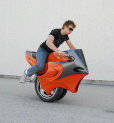
Update:
Since featuring Ben's invention, he has continued to develop and progress with his innovative product.
He won second place in the Intel International Science and Engineering Fair, and first prize in Popular Science's Invention Awards. Ben also appeared on the Tonight Show with Jay Leno and on the popular invention television show "Dragon's Den" where he received 1.25 million dollars from investors.
Gulak continues to develop and commercialize his invention while studying engineering at the Massachusetts Institute of Technology. The latest prototype, known as the Uno 3, can automatically transform itself from a uno-dicycle into a conventional looking motorcycle, which allows for greater acceleration, speed and stability.
Ben shares this advice for inventors, "When you have an idea, it's easy to get discouraged. There are so many people who will tell you that you're wasting your time. The biggest thing is to not let people get you down. If you really believe in something - keep going after it because there is always a way and you can make your dreams come true."
Subscribe to:
Comments (Atom)






